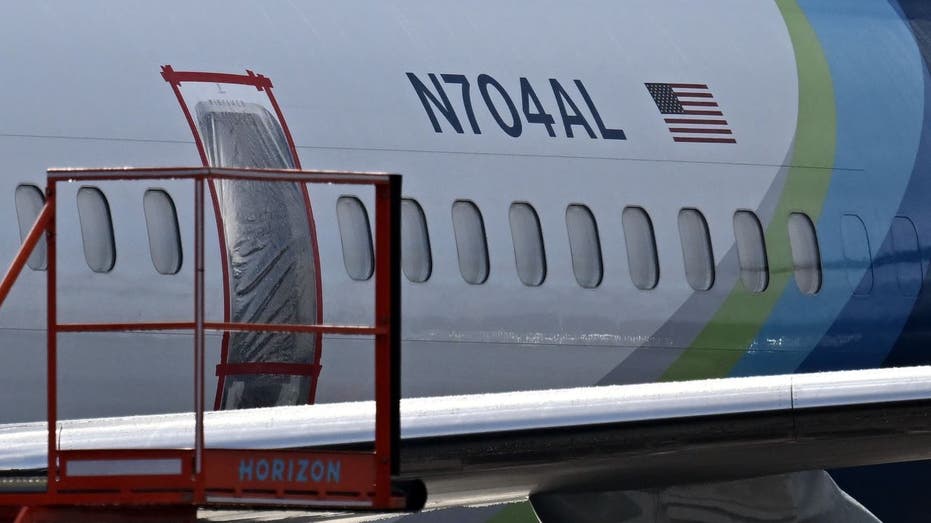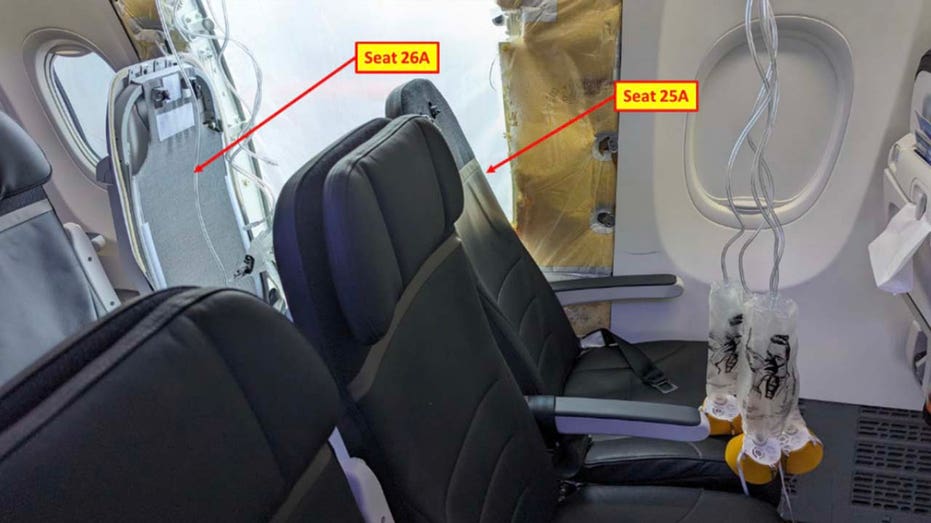Circle Squared Alternative Investments founder Jeff Sica discusses whether Boeing stock is a buy on ‘Varney & Co.’
Three passengers who were on Alaska Airlines Flight 1282 when a door plug blew out mid-flight on the Boeing 737 MAX 9 jet in January have filed a $1 billion lawsuit against the airline and Boeing.
Kyle Rinker and his girlfriend Amanda Strickland were seated just two rows diagonally behind the teenager who had his shirt sucked off when the door plug flew off, their attorney Jonathan Johnson, an aviation law specialist, said in a press release this week.
Kevin Kwok, who was also sitting near the pair, is also part of the lawsuit filed late last month in Multnomah County, Oregon.
“This is mostly about the systemic problems at Boeing, which is jeopardizing the lives of the entire traveling public who travel on Boeing aircraft,” Johnson told KGW-TV. “They should not be trusting luck to avoid a planeload of people being killed.”
ALASKA AIRLINES PASSENGER DESCRIBES TERRIFYING FLIGHT TO CALIFORNIA: ‘THERE WAS A HOLE IN THE PLANE’

The missing emergency door of Alaska Airlines N704AL, a 737 Max 9, which made an emergency landing at Portland International Airport on January 5 is covered and taped, in Portland, Oregon on January 23, 2024. Alaska Airlines will start resuming servi (Photo by PATRICK T. FALLON/AFP via Getty Images / Getty Images)
Rinker told KGW that about five minutes into the flight “we heard the loud pop. We were just sitting there trying to relax … and then, that thing just happens. The oxygen masks come down, just like, ‘Oh, wow, something’s going on. We got to get these on.'”
He added, “The wind just came rushing it. It was very, very cold all of the sudden, obviously, because you’re flying up there at 16,000 feet.”
Rinker said they live in an area where he often hears airplanes overhead, which has been triggering since the incident.
“We have not been on a plane since. I’m not sure when that will happen again,” he said.
NTSB REPORT: MISSING BOLTS FROM DOOR PLUG PLAYED FACTOR IN MIDAIR BLOWOUT OF ALASKA AIRLINES FLIGHT
The lawsuit is just the latest legal challenge that Alaska and Boeing have faced since the Jan. 5 incident when the Ontario, California-bound flight was forced to make an emergency landing back in Portland. No serious injuries were reported.

Investigators from the National Transportation Safety Board said evidence shows four bolts that hold the door plug in place on the Boeing 737 Max 9 were missing at the time of last month’s blowout on Alaska Airlines flight 1282. (NTSB / Fox News)
Mark Lindquist, another lawyer who represents 22 other passengers who were onboard Flight 1282 when it depressurized, told Fox Business last month their lawsuit against Boeing and Alaska had been expanded to include the allegation that passengers on a prior flight of the aircraft heard a whistling sound.
The updated lawsuit says, “there was a whistling sound coming from the vicinity of the door plug on a previous flight of the subject plane. Passengers apparently noticed the whistling sound and brought it to the attention of flight attendants who reportedly informed the pilot or first officer.”
It alleges that no known further action was taken “After the pilot checked cockpit instruments, which purportedly read normal.”
The expanded lawsuit also cites the preliminary report released by the National Transportation Safety Board (NTSB) last month, which found the cockpit door was designed to blow out in a depressurization situation and that pilots and crew weren’t informed of this design feature.
“The resulting shock, noise, and communication difficulties contributed to a lack of proper communication between the flight crew and passengers, thereby intensifying confusion and stress,” according to the lawsuit.
The lawsuit includes allegations of emotional and physical injuries, including severe stress, anxiety, trauma and hearing damage. More passengers were added to the lawsuit in the amended filing.
Following the incident, the FAA grounded the Max 9 fleet for further investigation.
Last week, FAA Administrator Mike Whitaker told Boeing officials they had to address the company’s “systemic quality-control issues.”
GET FOX BUSINESS ON THE GO BY CLICKING HERE
“Boeing must commit to real and profound improvements,” Whitaker said after a meeting with Boeing Chief Executive Officer and President Dave Calhoun and his senior safety team. ”Making foundational change will require a sustained effort from Boeing’s leadership, and we are going to hold them accountable every step of the way, with mutually understood milestones and expectations.”
Fox Business has reached out to Johnson for comment. Boeing and Alaska Airlines declined to comment.
Fox Business’ Eric Revell contributed to this report.



